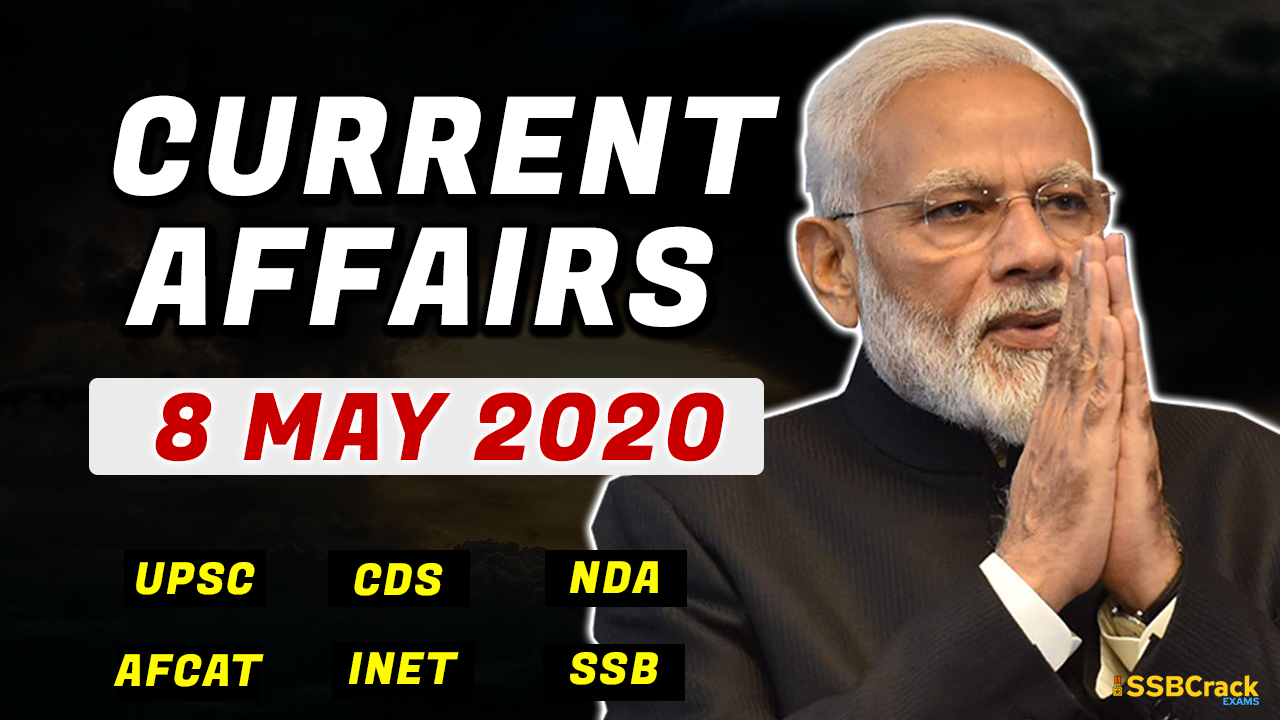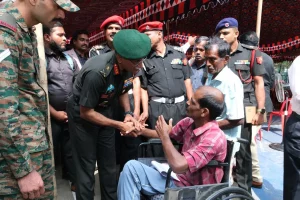Discussions between Dharmendra Pradhan, with Minister of Energy of Russia
- Shri Dharmendra Pradhan, Minister of Petroleum and Natural Gas and Steel held discussion with Mr. Alexander Novak, Minister of Energy of Russia through Video Conferencing on 6 May 2020.The discussions encompassed the global oil and gas scenario and review of bilateral cooperation in the sectors of oil and gas sector and coking coal.
- Minister Novak briefed the Indian Minister on the recently signed OPEC+ agreement. Minister Pradhan welcomed the agreement as an important step in providing stability and predictability to the global energy markets, which is important for India as a consuming nation. The Russian Minister recognised and appreciated the role India plays as a major bilateral partner but also as a major demand driver of hydrocarbon consumption. Minister Pradhan emphasised that Indian economy will continue to be the demand centre for hydrocarbons.
- The two Ministers also reviewed the ongoing projects between the two countries including the participation with Rosneft in the Vostok Project, Novatek supplies of LNG, cooperation between Gail and Gazprom, joint projects with Gazpromneft, supply of crude oil by Rosneft to Indian Oil etc. Russian side appreciated India’s continued cooperation despite the unforeseen circumstances arising on account of Covid 19. Minister Novak reaffirmed their desire to support Indian energy needs.
- During the meeting, particular emphasis was laid on the cooperation in the coking coal sector in which considerable headway has been made since the Indian Prime Minister’s visit to Russia in September 2019. In this context the Russian Minister welcomed Shri Pradhan’s suggestion of an early convening of a meeting of a high level WG to strengthen cooperation in coking coal with the aim of a conclusion of a MoU.
- The Indian side welcomed long term cooperation with the Russian side and Minister Pradhan reiterated his request for Minister Novak to visit India at a convenient time when situation stabilises. In the interim both Ministers instructed their officials to carry out discussions through VC.
- Both sides agreed on the assessment of the current challenges to the global energy scenario and the important role India will play as a driver of a resurgence in demand which will be pivotal in global economic revival.
ICAR Institutes released Advisories to Fisheries sector
- The Covid-19 pandemic that spread all across the globe leading to lockdown, has significantly affected the fisheries & aquaculture sectors in a multitude of ways in the country. Besides the disruption of fishing activities from open-water, and aquaculture in both freshwater and brackish water systems, several associated activities like seed production, feed plant operation, supply and market chains, etc. have been greatly impacted. As a whole, the fishermen, fish workers, processors and their communities have been facing the threat of the pandemic, which is affecting the entire value chain and the livelihoods depending on it.
- In order to ensure safety of all stakeholders associated in the agricultural sector, the Indian Council of Agricultural Research (ICAR), Department of Agriculture Research and Education (DARE), Ministry of Agriculture & Farmers Welfare, Govt. of India, through its research Institutes have taken several innovative steps to sensitize all concerned in different sub-sectors.
- In fisheries sector, including capture fisheries, aquaculture and other associated activities, ICAR took lead in developing and issuing advisories through the Fishery Institutions, for safety of the workers and preventing the spread of the disease. In this endeavor, ICAR-Central Institute of Fisheries Technology (ICAR-CIFT), Kochi prepared advisories for the benefit of the fishermen, fishing boat owners, fishing Harbour, fish market and seafood processing plants in 10 different regional languages, besides English and Hindi. ICAR-Central Inland Fisheries Research Institute (ICAR-CIFRI), Barrackpore prepared advisories for the stakeholders involved in fishing activities in rivers, estuaries, reservoirs and wetlands. These advisories were popularized through print & electronic media, circulated to State Fisheries Departments, developmental agencies, NGOs and SHGs, and also through social media. Such efforts have been received very well by the sector across the country.
- Recognizing the importance of these timely advisories, the Food and Agricultural Organization (FAO), Rome has recommended these advisories prepared by ICAR-CIFT and ICAR-CIFRI by including them as Voluntary Guidelines for Securing Sustainable Small-Scale Fisheries under the Asia-Regional initiatives for the benefit of fisheries sector across the globe.
Raksha Mantri approves abolition of 9,304 posts in Military Engineering Service
- Raksha Mantri Shri Rajnath Singh has approved the proposal of Engineer-in-Chief of Military Engineering Services (MES) for optimisation of more than 9,300 posts in the basic and industrial workforce. It is in line with the recommendations of the Committee of Experts, headed by Lt General Shekatkar, which had recommended measures to enhance combat capability and rebalance Defence expenditure of the Armed Forces.
- One of the recommendations made by the Committee was to restructure the civilian workforce in a manner that the work of MES could be partly done by departmentally employed staff and other works could be outsourced.
- In line with the recommendations made by the Committee, based on the proposal of E-in-C, MES, the proposal of abolition of 9,304 posts in MES out of the total 13,157 vacancies of the Basic and Industrial staff has been approved by Raksha Mantri.
- The recommendation was aimed at making MES an effective Organisation with a leaner workforce, well equipped to handle complex issues in the emerging scenario in an efficient and cost effective manner.
Health and AYUSH Ministers formally launch inter-disciplinary studies
- The following
studies were formally launched in the programme:
- Clinical research studies on Ayurveda interventions as prophylaxis and as an add-on to standard care to COVID 19: Collaborative clinical studies as a joint initiative of Ministry of AYUSH, Ministry of Health and Family Welfare (MoHFW) and the Ministry of Science & Technology through Council of Scientific & Industrial Research (CSIR) with technical support of ICMR.
- The Interdisciplinary Ayush R&D Task Force has formulated and designed clinical research protocols for prophylactic studies and add-on interventions in COVID-19 positive cases through thorough review and consultative process of experts of high repute from different organisations across the country for studying four different interventions viz. Ashwagandha, Yashtimadhu, Guduchi +Pippali and a poly herbal formulation (AYUSH-64)
- Ashwagandha for the Prophylaxes Against SARS-COV-2 in subjects with increased risk during the COVID 19 Pandemic: A comparison with Hydroxychloroquine in the health care providers and
- Effectiveness of
Ayurveda Formulation as an adjunct to ‘Standard of Care’ for the Treatment of
Mild to Moderate COVID-19: A Randomized, Open Label, Parallel Efficacy, Active
Control, Multi-Centre Exploratory Drug Trial.
- Population based interventional studies on impact of AYUSH based prophylactic interventions: The ministry of AYUSH is initiating population based studies to study the impact of Ayurvedic Interventions in prevention of COVID-19 infection in high risk population. The core objectives comprise of, assessment of preventive potential of AYUSH interventions for COVID 19 and also to assess the improvement in Quality of Life in high risk population. The study will be carried out through four Research Councils under Ministry of AYUSH and National Institutes in 25 states across the country and several State Governments covering approximately 5 lakhs population.
- The outcome of the study would certainly pave a new horizon in understanding the preventive potential of AYUSH interventions during pandemics like COVID 19 through scientific evidence.
- Ayush Sanjivani application based study for impact assessment of acceptance and usage of AYUSH advisories in its role in prevention of COVID 19: The Ministry of AYUSH has developed Ayush Sanjivani mobile app, for generating data of large population with a target of 5 million people. The core expected outcomes includes to generate data on acceptance and usage of AYUSH advocacies and measures among the population and its impact in prevention of COVID 19.
Union HRD Minister announces modifications in PMRF Scheme to boost research in the country
- Union Human Resource Development Minister Shri Ramesh Pokhriyal ‘Nishank’ today announced that, to boost research in the country various amendments have been carried out in Prime Minister’s Research Fellowship Scheme. He said that after the amendments, now for the students from any recognised institute/ university (other than IISc/ IITs/NITs/IISERs/IIEST/CF IIITs), the requirement of GATE Score is reduced to 650 from 750 apart from minimum CGPA of 8 or equivalent.
- The Minister also informed that now there will be two channels of entries, one direct entry and lateral entry. In lateral entry, the students, who are pursuing PhD in PMRF granting institutions (completed 12 months or 24 months as per certain requirements) can also apply to become fellow under the scheme as per new guidelines. Shri Pokhriyal further highlighted that NITs, which appear in top 25 institutions as per NIRF Ranking (overall) can also become PMRF Granting institution. The Minister hoped that the modifications will enable more students to avail of the benefit under the Prime Minister’s Research Fellowship Scheme.
India to start Weather Forecast for Gilgit Baltistan region from May 8th
- Doordarshan’s weather bulletin will have forecasts for Mirpur and Muzaffarabad in Occupied Kashmir and Gilgit in Northern Areas.
- The step will also be a constant reminder to the Imran Khan govt. that India will not allow Islamabad to take any steps to legitimise its illegal occupation
JNCASR scientists fabricate energy-efficient photodetector for security application
- Scientists from Jawaharlal Nehru Centre for Advanced Scientific Research (JNCASR), an autonomous institute under the Department of Science and Technology, have fabricated an economical and energy-efficient wafer-scale photodetector (thin slice-based) using gold – silicon interface, for security applications. It could help detect weak scattered light as an indication of unwanted activity.
- Photodetectors are the heart of any optoelectronic circuit that can detect light and are employed for a wide variety of applications ranging from controlling automatic lighting in supermarkets to detecting radiation from outer galaxy as well as security-related applications. However, the material cost and the intricate fabrication processes involved in realizing high-performance detectors make them unaffordable for day to day applications.
- The invention by JNCASR scientists, which was published in the journal Applied Electronic Materials of the American Chemical Society, provides a simple and cost-effective solution-based fabrication method for high-performance photodetector.
- The scientists have fabricated gold (Au)–silicon (n-Si) interface, which showed high sensitivity towards light demonstrating the photo-detection action. The Au–Si interface was brought about by galvanic deposition, a technique for electroplating of metals, wherein water-based solutions (electrolytes) are used, which contain the metals to be deposited as ions. In addition, a nanostructured Au film also was deposited on top of p-type silicide (having an excess of positive charges), which acts as a charge collector.
- Being a solution-based technique, the method is highly economical and enabled large-area fabrication without compromising the detector response. The process is quick, taking only minutes to fabricate a detector of any arbitrary area. The metal nanostructures enhanced the performance of the fabricated detector through trapping the incoming light. This photodetector displayed long-term environmental stability.
- The detector exhibits a rapid response of 40microseconds and can detect low light intensities. The device covers a broad spectral range from Ultraviolet to Infrared. Besides, it shows excellent uniformity throughout the entire active area with less than 5% variation in response. Notably, the detector operates in self-powered mode, which means the device does not require external power for its operation, thus making it energy efficient. With a commonly available protective coating, excellent environmental stability is shown for the device under the harsh conditions for several days. The scientists also demonstrated the photodetector’s utility as a prototype imaging system, lux and power meter, and also as a tool for security applications.
COVID19 current update in India
QUIZ TIME
- What is the full form of CIFT which works under ICAR?
- Central Institute of Fisheries Technology
- Central Institute of Financing Technology
- Central Institute of Foresting Technology
- None of the Above
Answer: A
- What is the minimum GATE Score required to avail PMRF?
- 750
- 850
- 650
- None of the Above
Answer: C
- Which if the following country is a part of OPEC Countries?
- USA
- Russia
- France
- Venezuela
Answer: D


















